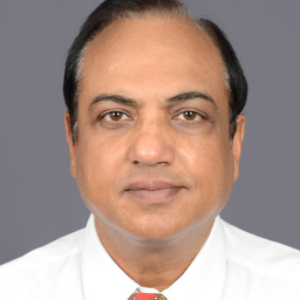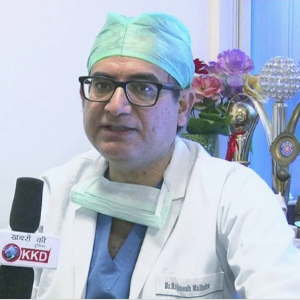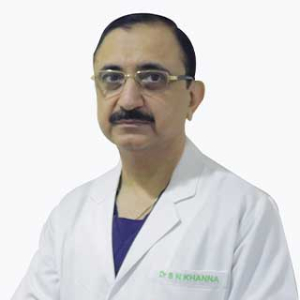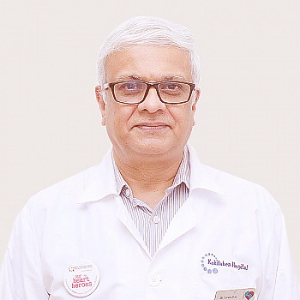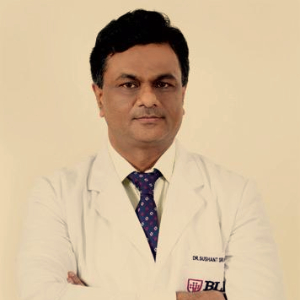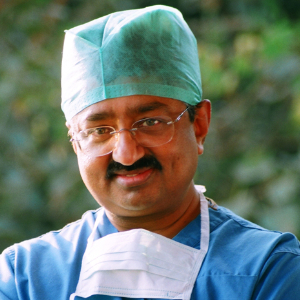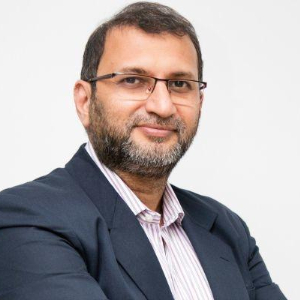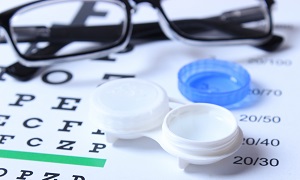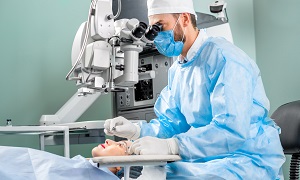Best Doctors in India for Marfan syndrome Treatment
- Cardiac Surgeon, Gurugram, India
- Over 30 years’ experience
Profile Highlights:
- Dr. Murtaza A Chishti is one of the most well-known and distinguished Cardio-Thoracic and Vascular surgeons in North India
- He has more than 3 decades of experience in the field of cardiac surgery with a specialization in heart and lung transplantation surgeries.
- He has performed more than 6000 cardiac procedures that include Total Arterial revascularization, aortic surgery, complex and re-operative coronary surgery, CABG, and several other cardiothoracic surgeries.
- Cardiac Surgeon, Mumbai, India
- Over 36 years’ experience
Profile Highlights:
- Dr. Nandkishore Kapadia is one of the leading Cardiothoracic and vascular surgeons in India excelling in heart and lung transplant surgeries.
- He has 36+ years of experience in the field during which he has performed over 10000 CABGs, 2000 heart valve repairs, and 800 minimally invasive cardiac surgeries.
- He has also performed more than 5000 open heart surgeries, 200 heart and lung transplant surgeries, and 150 VAD and ECMO implantation procedures.
- Cardio Thoracic & Vascular Surgeon, New Delhi, India
- Over 30 years’ experience
Profile Highlights:
- Dr. Rajneesh Malhotra is a distinguished cardiovascular and thoracic surgeon in India with over 30 years of experience.
- He is an expert in all kinds of cardiac surgeries with a special interest in Robotic Cardiac surgery along with minimally invasive cardiac surgery and other traditional heart surgeries.
- Dr. Rajneesh Malhotra has performed several complex and high-risk cases and also specializes in heart transplant surgeries and surgeries for heart failure.
- Cardiac Surgeon, New Delhi, India
- Over 26 years’ experience
Profile Highlights:
- Dr. Surendra Nath Khanna is a leading cardiovascular and thoracic surgeon specializing in minimally invasive cardiac surgeries, heart valve repairs, and heart failure surgeries.
- Dr. Surendra Khanna has 26+ years of experience in cardiac care and has performed more than 17000 surgeries that include beating heart surgery, mitral and aortic valve surgery, and double valve replacement surgery.
- His expertise lies primarily in adult cardiac surgeries and has done some of the most complex cardiac surgeries in India
- Pediatric Cardiac Surgeon, Mumbai, India
- Over 33 years’ experience
Profile Highlights:
- Dr. Suresh Rao is a highly experienced cardiac surgeon specializing in congenital heart diseases and has performed more than 12,000 surgeries for congenital heart diseases and disorders.
- Dr. Rao holds an extensive experience of over 33 years in Pediatric and congenital cardiac surgery and has performed numerous simple and complex heart defect surgeries with successful outcomes.
- Dr. Suresh Rao introduced the Modified Ultrafication procedure after congenital heart surgery in India and has used the procedure in the treatment of a large number of pediatric as well as adult patients.
- Cardiac Surgeon, Mumbai, India
- Over 30 years’ experience
Profile Highlights:
- Dr. Suresh V Joshi is a cardiac surgeon in Mumbai with expertise in undertaking complex surgeries as a result of congenital heart diseases.
- He holds an extensive experience of over 3 decades in cardiac surgery and specializes in Coronary Artery Bypass Grafting (CABG); specifically Beating Heart CABG and Minimally Invasive Cardiac Surgeries.
- He is an expert in all kinds of coronary and interventional cardiac procedures and has performed over 15,000 cardiac surgeries for different kinds of heart defects and disorders.
- Chairperson Heart & Lungs Transplant, New Delhi, India
- Over 20 years’ experience
Profile Highlights:
- Dr. Sushant Srivastava is a renowned cardiovascular and thoracic surgeon specializing in heart transplantation.
- He specializes in performing Beating Heart Bypass surgeries and is credited with performing the procedure on the oldest patient in India (96 years old). He also performed the first awake CABG in North India.
- He has taken up close to 10000 cardiac cases in his career and performed 3000+ cardiac surgeries related to Coronary Artery Bypass Grafting (CABG), redo coronary artery surgery, heart failure surgeries, heart valve surgeries, and various other types of cardiac surgeries.
- Cardiac Surgeon, Bengaluru, India
- Over 30 years’ experience
Profile Highlights:
- Dr. Vivek Jawali is a renowned Cardiothoracic and Vascular Surgeon in India and has performed more than 18,000 cardiothoracic and cardiovascular surgeries.
- He has several firsts to his credit that including the first beating heart bypass surgery in 1992 and the first Minimally Invasive Heart Bypass surgery in 1994 in India.
- He performed the first Awake Cardiac Surgery in 1999 which is done without general anesthesia or ventilator but under continuous high thoracic epidural. He also performed the first awake open heart surgery in the world without general anesthesia or ventilator on a 74-year-old patient for triple bypass with aortic valve replacement.
- Cardiac Surgeon, New Delhi, India
- Over 30 years’ experience
Profile Highlights:
- Dr. Yugal Kishore Mishra is a well-known cardiovascular and thoracic surgeon in Delhi specializing in Minimally Invasive and Robotic cardiac surgeries.
- He has 3 decades of experience in CTVS and has performed more than 19,000 open heart surgeries to date that including various types of minimally invasive cardiac procedures such as the port access approach for valve surgery and ASD closure.
- He is the founder of the Robotic Cardiac Surgery Program at Fortis Escorts Heart Institute where he has performed over 500 robotic cardiac surgeries.
- Cardiac Surgeon, Mumbai, India
- Over 24 years’ experience
Profile Highlights:
- Dr. Zainulabedin Hamdulay is one of the best cardiac surgeons in Mumbai, India, and specializes in devising new and innovative techniques for cardiac surgeries.
- He has 24+ years of experience and has performed over 8000 cardiac surgeries that included complex valve repairs, congenital cardiac surgery, CABG, and several minimally invasive cardiac surgeries.
- With a motive to provide the best, affordable and comprehensive cardiac care to all his patients, he founded the Hamdulay Heart Foundation to provide aid to the economically backward community.
Best Hospitals in India for Marfan syndrome Treatment
Marfan Syndrome
Marfan syndrome is an inherited disorder, which affects the connective tissue in the body, which gives support and strength to various parts of the body such as cartilage, blood vessels, etc. This syndrome usually affects the eyes, blood vessels, the heart and the skeleton.
Usually tall and skinny people are victims of this syndrome. They might also have disproportionately long arms, fingers, legs and toes. Sometimes this ailment can be mild and at other times, quite severe. The large blood vessel which carries blood from your heart to the rest of the body is called the aorta. If this gets affected, your condition might be life-threatening.
Treatment for Marfan syndrome usually includes medications to help keep the blood pressure low, to reduce strain on the aorta. It is also important to monitor it regularly and check for damage progression. Most people suffering from this ailment eventually require preventive surgery for repairing the aorta.
Symptoms of Marfan Syndrome
These signs and symptoms of this illness can vary greatly, even among family members. Though some people experience only mild effects, others can develop life-threatening complications. In many cases, the disease also gets worse as one age.
Some of the symptoms of Marfan syndrome:
- Tall and Slender Build
- A breastbone protruding outward or dipping inward
- Disproportionately long arms, fingers, and feet
- Heart murmurs
- Extreme nearsightedness
- Abnormally curved spine
- Flat feet
Causes and risk factors
Marfan syndrome is caused by a change in the gene which controls how the body makes fibrillin, which is an essential part of connective tissue that can help to make it strong and elastic.
Marfan syndrome happens equally among both genders. In most cases, this ailment is inherited from a parent. People with this ailment have a 50% risk of passing down to their offspring. In some people with this syndrome, the gene changes without a clear cause.
Diagnosis of Marfan Syndrome
Marfan syndrome can be quite challenging for doctors to diagnose, as many connective tissue disorder have similar signs and symptoms. Even among some members of the same family, the signs and symptoms of Marfan syndrome vary widely, both in features as well as severity.
Certain combinations of symptoms and family history need to be presented to confirm a diagnosis of Marfan syndrome. In some cases, a person might have some features of Marfan syndrome, though not enough of them for a diagnosis of the syndrome.
Heart Tests
When a doctor suspects Marfan syndrome, usually the first test that is recommended is an echocardiogram. With the use of sound waves, this test captures real-time images of your heart in motion. It checks the condition of your heart valves as well as the size of your aorta. There are also other heart imaging options such as computerized tomography scans as well as magnetic resonance imaging.
If you are diagnosed with Marfan syndrome, regular imaging tests will be required for monitoring the size and condition of your aorta.
Eye Tests
Eye exams that might be needed can include:
- Slit-lamp exam- This test checks for lens dislocation, a detached retina as well as cataracts. For this exam, your eyes will have to be dilated as well.
- Eye pressure test- To check for signs of glaucoma, your eye doctor might measure the pressure inside your eyeball by touching it with some kind of special tool. Usually, before this test, numbing eye drops are used.
Genetic Testing
Genetic testing is also often used for confirming the diagnosis of Marfan syndrome. If a Marfan mutation is found, family members can also be tested, to see if they are affected as well. You might consider talking to a genetic counselor, before you start a family, to see your chances of passing on Marfan syndrome to your future children.
Treatment options for Marfan Syndrome
There is no known permanent cure for Marfan syndrome and the treatment focuses on preventing the various complications of the ailments. For achieving this, you need to be checked regularly for signs that the damage caused by the disease is progressing.
In the past, people suffering from Marfan syndrome usually died young. But with modern treatment as well as regular monitoring combined, people suffering from this syndrome can live up to a normal life span.
Medications
Therapy
Surgery and Other Procedures
Depending upon the signs and symptoms, procedures might include:
Aortic repair
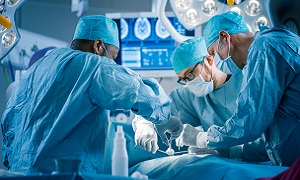
If you aorta’s diameter reaches around 2 inches or if it enlarges quickly, your doctor might recommend an operation for replacing a portion of your aorta with a synthetic tube. This will help to prevent a rupture which can be life-threatening. Your aortic valve might also require replacement.
Scoliosis treatment
When there is significant scoliosis, a consultation with a spine expert is important. In some cases, bracing and surgery might be needed.
Breastbone corrections
For correcting the appearance of a sunken or protruding breastbone, one can choose to go for surgery. However, one should remember that these operations are considered to be for cosmetic purposes and therefore, your insurance may not cover your costs.
Eye Surgeries
Complications
Marfan syndrome can affect several parts of the body, leading to various kinds of complications, some of them including-
- Damage to the aorta: This can be considered one of the biggest threats of Marfan syndrome. Your aorta is the artery that carries blood from your heart to the rest of your body. Marfan syndrome can break open the aorta’s inner layers and cause dissection or bleeding in the wall of the vessel. Aortic dissection might be deadly. You might also require surgery for replacing the aorta’s affected parts.
- Mitral valve prolapse: Some people who suffer from Marfan syndrome also have a condition that causes billowing of the heart valve. This may be linked with uneven or rapid heartbeats as well as shortness of breath. It might need surgery.
- Lens dislocation: The lens in our eye, which focuses on your vision, might move out of place, which leads to a condition called ectopia lentis.
- Glaucoma or cataracts: Marfan syndrome can increase your chances of getting eye ailments like cataracts or glaucoma at an early age.
- Skeletal issues: People with this syndrome are also more likely to have a curved spine, unusual ribs, back pain and foot pain.
- Pregnancy complications: Because pregnancy increases the amount of blood in the body and aorta which is weakened by Marfan syndrome is at a higher risk of a rupture or dissection during pregnancy.


